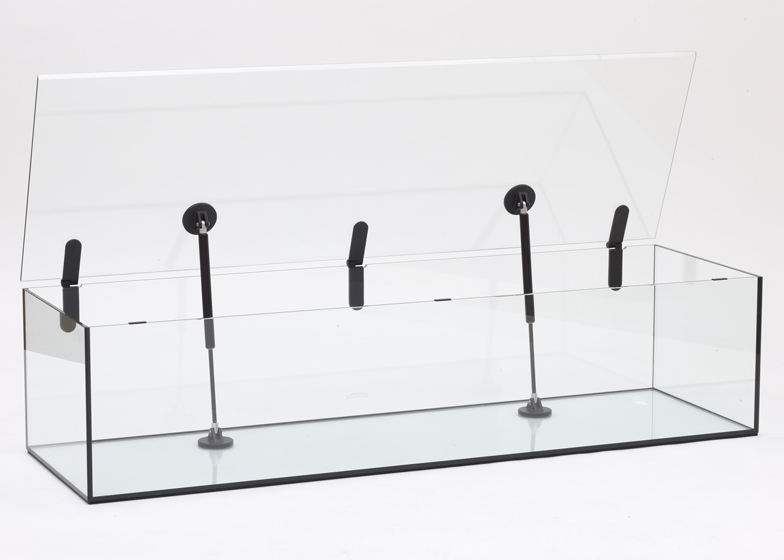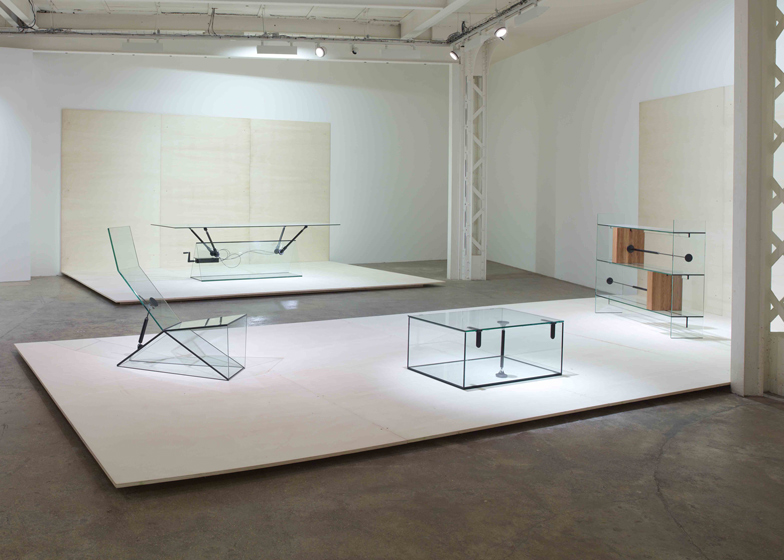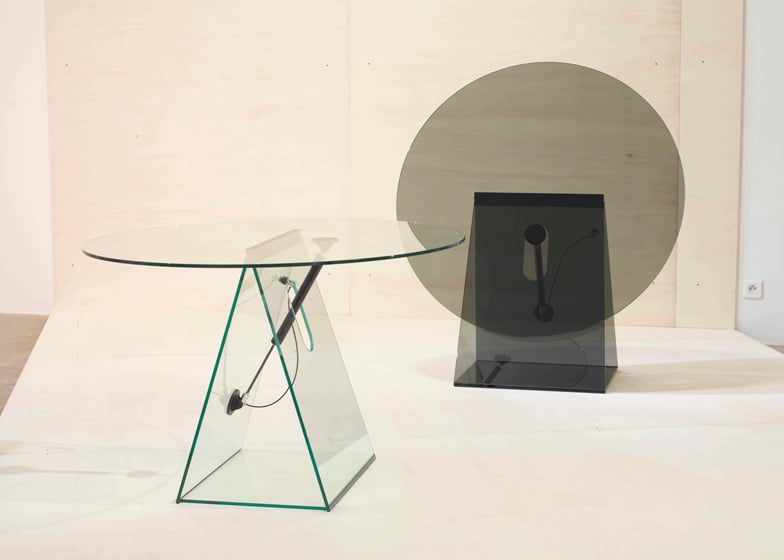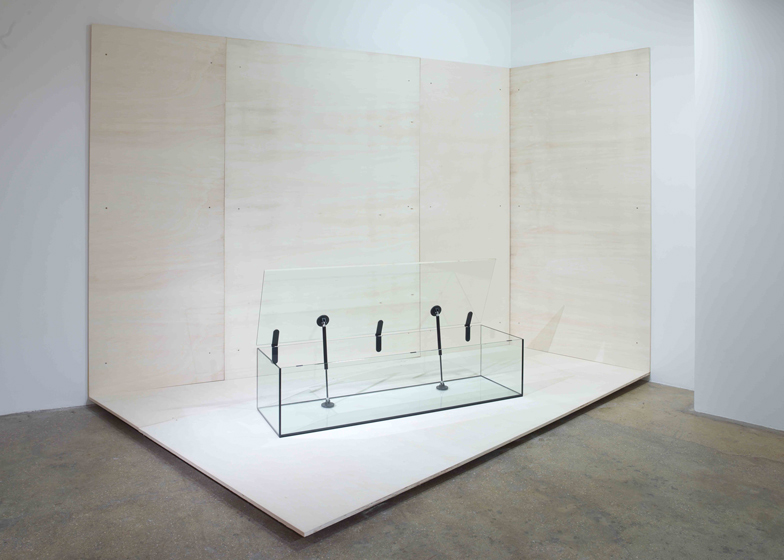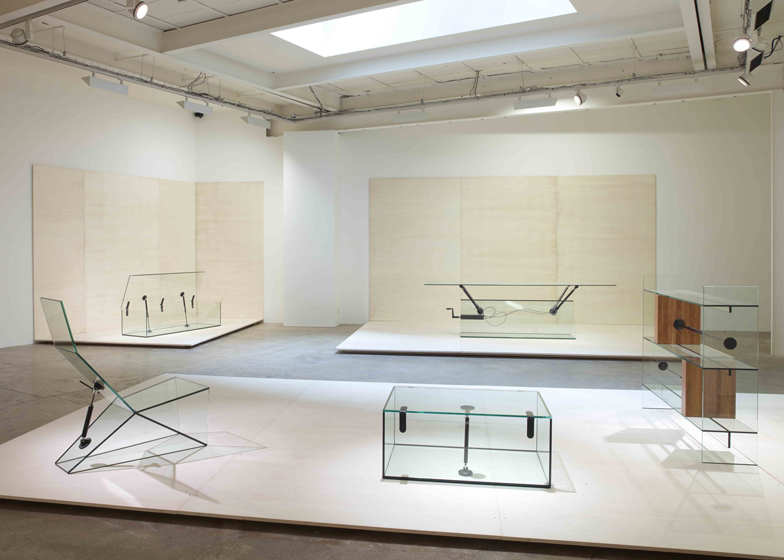Designer Konstantin Grcic has produced a collection of furniture that combines industrial sheet glass with pistons, hinges and cranks for his latest exhibition at Galerie Kreo in Paris (+ slideshow).
Grcic collaborated with a traditional glass workshop in Frankfurt, Germany, to produce the collection comprising a chair, tables, chests, shelving and a vertical cabinet from the same float glass commonly used in architectural projects.
"Glass is not an obvious material for making furniture but it is a very intriguing material," Grcic told Dezeen. "It is an industrial material, which is an aspect that I like about it."
The transparency of the glass contrasts with fittings made from the black silicone typically used to minimise damage to glass surfaces, and the furniture also employs industrial gas pistons to introduce movement and an element of interactivity.
"These gas pistons - which are another industrially pre-fabricated product - create movement in a very magical, soft way," said Grcic. "I think it adds another quality to the furniture that makes it more human."
In the example of the chair, the pistons are linked to a lever that can be used to alter the position of the backrest, while round tables incorporate a piston that makes it easy to fold the top down.
A large table has four telescopic pistons attached to a crank that adjusts the height of the surface, simple boxes feature lids that close smoothly without any danger of breakage, and a book shelf incorporates wooden blocks that can be slid sideways like sprung bookends.
"Because the gas piston makes the movement so precise and controlled, it gives a lot of confidence," Grcic pointed out. "These pistons are industrial products but each one is customised, so we specify exactly what it is used for. It is very beautiful - almost scientific - how they accurately adjust the piston to just be what we need, with a very soft, almost automatic movement."
Grcic said he believes that there is a stigma that affects people's relationship with glass furniture: "As well as the perception that glass is cold, there is a psychological belief that maybe it is fragile and could break and hurt you. [With these pieces] I am forcing you to interact, to touch it and interact with it and to overcome this psychological barrier."
The exhibition's title, Man Machine, is borrowed from an album by German electronic band Kraftwerk, and Grcic claimed it was chosen to represent the meeting of "the human heart and the machine, the mechanical precision, the cogs, the cold industrial aesthetic with something that is softer, more poetic, more emotional."
The designer, who is renowned for his industrially manufactured products for brands including Vitra, Magis and Emeco, said that projects such as this one and a previous collection of painted aluminium furniture he designed for Galerie Kreo offer an opportunity to experiment with ideas that might eventually filter into his commercial work.
"I think in design it is not necessary that we push these boundaries all the time but sometimes it is really good and the gallery provides the freedom to experiment and to try things," the designer claimed.
"My work for galleries is very much informed by my thinking as an industrial designer," he added. "The gallery is a laboratory for ideas that I would eventually love to see being developed on an industrial scale. Only by creating them do you understand their potential, how they work and how they could be developed further on an industrial scale."
The exhibition continues until 17 May 2014.
Photography is by Fabrice Gousset, courtesy of Galerie Kreo.


